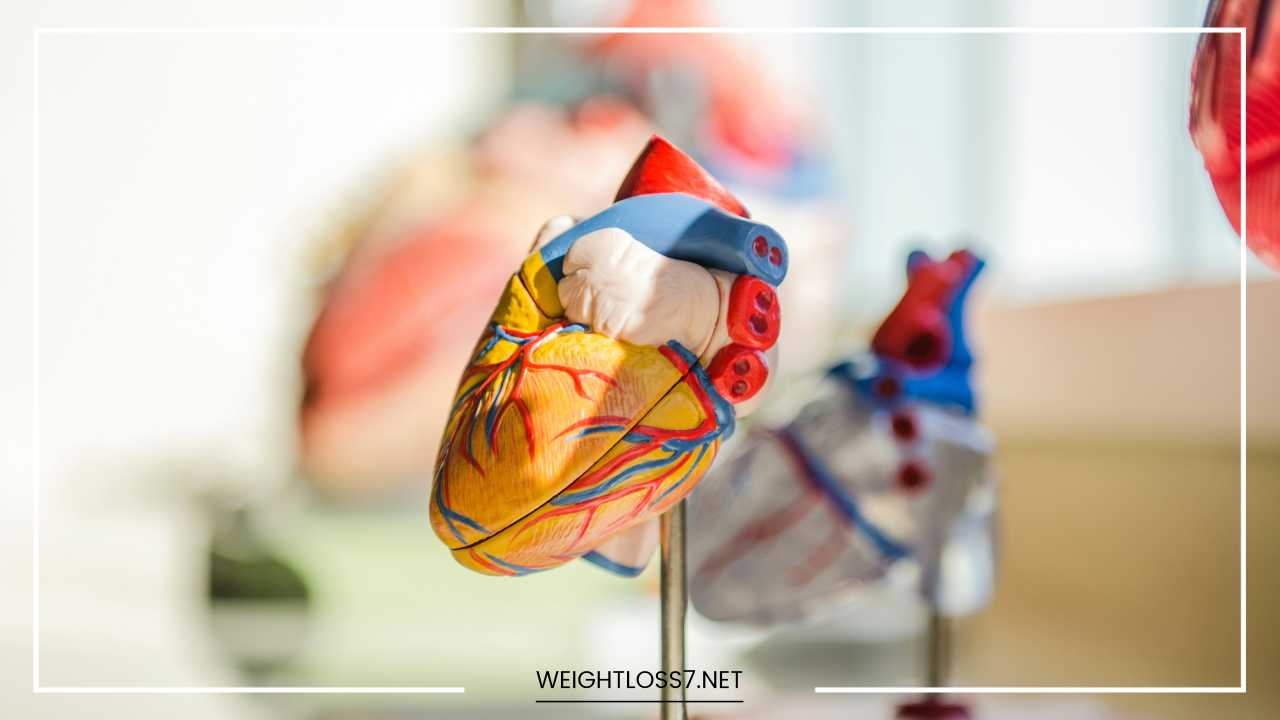Heart Disease: Prevention, Treatment & More

Heart Disease
Understanding Heart Disease: A Comprehensive Guide
Heart disease. It casts a long shadow, claiming millions of lives worldwide each year. But beneath this ominous term lies a complex landscape of conditions affecting the heart.
This comprehensive guide delves into the various forms of heart disease, their causes, symptoms, and most importantly, empowers you with knowledge on prevention and treatment options.
By understanding your heart’s health, you can take charge and live a longer, healthier life.
A Deeper Look at Heart Disease Types:
We delved briefly into some common heart disease types. Now, let’s explore them in more detail:
-
Coronary artery disease (CAD): The arch-nemesis of healthy hearts, CAD develops when plaque, a sticky substance containing cholesterol, accumulates in the coronary arteries. This buildup narrows the arteries, hindering the smooth flow of blood, oxygen, and nutrients to the heart muscle. This restricted blood flow can manifest as chest pain (angina) during exertion, a warning sign that shouldn’t be ignored. If a complete blockage occurs, it can trigger a heart attack, a medical emergency requiring immediate attention.
-
Heart Attack: A heart attack occurs when a blood clot completely blocks a coronary artery, cutting off blood flow to a part of the heart muscle. This starves the heart tissue of oxygen and nutrients, leading to cell death and permanent damage. Symptoms of a heart attack can vary but often include crushing chest pain, radiating pain in the arm, jaw, or back, shortness of breath, cold sweats, and nausea. Early intervention is crucial to minimize damage and improve outcomes.
-
Heart Failure: This doesn’t imply the heart has stopped entirely. Instead, it signifies a weakened and inefficient heart that struggles to pump blood effectively. This can lead to a cascade of problems, including fluid buildup in the lungs and legs (congestion), fatigue, shortness of breath, and even reduced exercise tolerance. Various factors, including CAD, high blood pressure, and certain heart muscle diseases, can contribute to heart failure.
-
Stroke: While not strictly a heart disease, stroke shares a close link. It occurs when a blood clot blocks an artery supplying blood to the brain, or when a weakened blood vessel in the brain ruptures. This disruption in blood flow leads to brain cell death and can cause lasting neurological impairments like paralysis, speech difficulties, and cognitive decline. Risk factors for stroke significantly overlap with those for heart disease, highlighting the importance of a holistic approach to cardiovascular health.
Beyond the Usual Suspects: Less Common Heart Conditions:
While CAD, heart attack, heart failure, and stroke take center stage, other heart conditions deserve mention:
-
Arrhythmias: These are irregular heartbeats that can be caused by various factors, including electrical signal malfunctions within the heart muscle itself. Common arrhythmias include atrial fibrillation (AFib), characterized by rapid and irregular heartbeats originating in the upper chambers of the heart (atria), and ventricular fibrillation (V-fib), a chaotic and potentially life-threatening heart rhythm.
-
Cardiomyopathy: This condition refers to a weakening or stiffening of the heart muscle, affecting its pumping ability. Different types of cardiomyopathy exist, each with its own cause and characteristics. Dilated cardiomyopathy, for example, enlarges and weakens the heart, while hypertrophic cardiomyopathy causes the heart muscle to thicken abnormally.
-
Congenital Heart Defects: These are structural abnormalities of the heart and its blood vessels that are present at birth. They can range from mild, causing no symptoms, to life-threatening, requiring complex surgical interventions. Examples include septal defects (holes in the heart walls), valve malformations, and narrowed heart pathways.
-
Pericarditis: This inflammation of the pericardium, the sac-like structure surrounding the heart, can cause sharp chest pain that worsens with deep breaths or lying down. It can be caused by viral infections, autoimmune disorders, or chest injuries.
Unmasking the Culprits: Diving Deeper into Heart Disease Causes:
Understanding the root causes of heart disease empowers you to take preventive measures. Let’s dissect the controllable and uncontrollable risk factors:
-
Controllable Risk Factors:
- Unhealthy Diet: A diet laden with saturated and trans fats, excessive cholesterol, added sugars, and refined carbohydrates can significantly increase your risk of heart disease. Conversely, a diet rich in fruits, vegetables, whole grains, and lean protein promotes heart health.
- Physical Inactivity: A sedentary lifestyle is a major risk factor. Regular physical activity, even moderate-intensity exercise for 30 minutes most days of the week, strengthens your heart, improves blood flow, and helps manage weight.
- Smoking: Smoking damages blood vessels throughout the body, including those supplying the heart. It also increases inflammation and promotes blood clot formation, all detrimental to heart health.
- Excessive Alcohol Consumption: Heavy alcohol consumption can raise blood pressure, damage heart muscle, and contribute to weight gain, all of which increase heart disease risk. Moderate alcohol consumption, however, may offer some heart benefits, but consult your doctor for personalized advice.
- Obesity and Overweight: Excess body weight, particularly around the waist, puts strain on the heart and increases your risk of developing other conditions like high blood pressure and diabetes, which further contribute to heart disease.
- Stress: Chronic stress can elevate blood pressure, increase inflammation, and negatively impact heart health. Techniques like meditation, yoga, and deep breathing can help manage stress and protect your heart.
Uncontrollable Risk Factors:
- Age: As we age, the risk of heart disease naturally increases. The heart muscle weakens, arteries stiffen, and the risk of developing other conditions that contribute to heart disease rises.
- Family History: Having a close family member with heart disease increases your risk. While you can’t change your genes, being aware of your family history allows for more proactive management of other risk factors.
- Ethnicity: Certain ethnicities have a higher predisposition to heart disease due to complex genetic and environmental factors. However, focusing on healthy lifestyle choices can still significantly mitigate this risk.
The Silent Threat: Recognizing Early Warning Signs of Heart Disease:
Heart disease can be a silent thief, progressing without noticeable symptoms for years. However, some early warning signs shouldn’t be ignored. Here’s what to watch out for:
- Chest pain, tightness, or pressure (angina): This discomfort, often described as a squeezing or pressure sensation in the chest, can occur with exertion or even at rest. It’s a crucial warning sign that shouldn’t be dismissed.
- Pain radiating to the shoulder, arm, jaw, back, or stomach: Discomfort in these areas can sometimes accompany chest pain and shouldn’t be ignored.
- Shortness of breath: This can occur at rest or with exertion and can be a sign of heart failure or other heart conditions.
- Palpitations (feeling like your heart is racing): While occasional heart palpitations are normal, frequent or persistent ones warrant a doctor’s evaluation.
- Fatigue: Feeling unusually tired or lacking energy can be a sign of various conditions, including heart disease.
- Lightheadedness or dizziness: This can indicate a problem with blood flow to the brain and could be linked to heart disease.
- Swelling in the legs and ankles: This fluid buildup (edema) can be a sign of heart failure, especially if accompanied by other symptoms.
Remember, these symptoms can also be caused by other conditions. However, if you experience any of them, especially if they’re new or worsening, seek immediate medical attention. Early diagnosis and treatment are crucial for managing heart disease effectively.
The Power of Prevention: Building a Heart-Healthy Lifestyle:
The good news is that you have significant power to prevent heart disease or slow its progression. Here are some key lifestyle modifications you can adopt:
- Embrace a Heart-Healthy Diet: Focus on fruits, vegetables, whole grains, lean protein, and healthy fats like those found in fish, avocados, nuts, and seeds. Limit saturated and trans fats, added sugars, and processed foods.
- Get Moving: Aim for at least 150 minutes of moderate-intensity exercise or 75 minutes of vigorous-intensity exercise most weeks of the week. Even small increases in activity can make a difference.
- Manage Stress: Chronic stress can wreak havoc on your heart. Explore stress-management techniques like meditation, yoga, deep breathing exercises, spending time in nature, or pursuing hobbies you enjoy.
- Maintain a Healthy Weight: Losing weight if you’re overweight or obese can significantly improve your heart health.
- Quit Smoking: Smoking is one of the most significant risk factors for heart disease. Quitting smoking is one of the best things you can do for your heart health.
- Limit Alcohol Consumption: If you choose to drink alcohol, do so in moderation.
- Get Regular Checkups: Schedule regular checkups with your doctor to monitor your blood pressure, cholesterol levels, and blood sugar.
Living with Heart Disease: Treatment Options and Management Strategies:
If you’ve been diagnosed with heart disease, don’t despair. There are various treatment options available to manage your condition and improve your quality of life. Here’s an overview:
- Medications: Your doctor may prescribe medications to lower blood pressure, reduce cholesterol levels, prevent blood clots, or manage heart failure symptoms.
- Minimally Invasive Procedures: Procedures like angioplasty and stenting can open blocked coronary arteries to improve blood flow.
- Surgery: In some cases, surgery may be necessary to address heart disease. Examples include:
- Coronary artery bypass grafting (CABG): This surgery reroutes blood flow around blocked coronary arteries using healthy blood vessels from other parts of the body.
- Heart valve replacement or repair: Damaged or malfunctioning heart valves can be surgically repaired or replaced with artificial valves.
- Aortic valve replacement: The aorta is the main artery leaving the heart. If the aortic valve narrows (stenosis) or leaks (insufficiency), surgery may be needed to replace it.
- Heart transplant: In severe cases of heart failure, a heart transplant may be an option.
Living a Full Life with Heart Disease:
Following your doctor’s recommendations, managing your risk factors, and adopting a heart-healthy lifestyle are crucial for living well with heart disease. Here are some additional tips:
- Cardiac rehabilitation: This supervised program helps you regain strength and improve your functional capacity after a heart event or surgery.
- Join a support group: Connecting with others who understand the challenges of living with heart disease can provide emotional support and encouragement.
- Stay informed: Educate yourself about your specific condition and treatment options. Talk openly with your doctor and ask questions.
- Focus on mental well-being: Heart disease can take a toll on your mental health. Addressing anxiety and depression can significantly improve your overall well-being.
- Don’t give up on your passions: Living with heart disease doesn’t mean giving up the activities you enjoy. Talk to your doctor about ways to modify your activities to stay safe and engaged.
The Future of Heart Disease Management:
Researchers are constantly exploring new and innovative ways to prevent, diagnose, and treat heart disease. Here’s a glimpse into the future:
- Advanced diagnostics: New imaging techniques and genetic testing may help identify individuals at high risk of heart disease much earlier, allowing for preventive measures.
- Personalized medicine: Tailoring treatment plans based on individual genetic makeup and other factors holds promise for more targeted and effective therapies.
- Minimally invasive procedures: Advancements in minimally invasive procedures may offer less disruptive and quicker recovery times for certain heart interventions.
- Stem cell therapy: Research is ongoing on the potential of stem cells to repair damaged heart tissue and improve heart function.
Final Word:
Heart disease may be a formidable opponent, but you are not powerless. By understanding the risk factors, recognizing the symptoms, and adopting a heart-healthy lifestyle, you can significantly reduce your risk and improve your cardiovascular health.
If you have been diagnosed with heart disease, remember that you are not alone. With proper treatment, management strategies, and a positive outlook, you can live a long and fulfilling life.
Empower yourself with knowledge. Take charge of your heart health. Live a long, vibrant life!
Additional Resources:
- American Heart Association: https://www.heart.org/
- Centers for Disease Control and Prevention: https://www.cdc.gov/nccdphp/index.html
- National Heart, Lung, and Blood Institute: https://www.nhlbi.nih.gov/
Disclaimer: This blog post is for informational purposes only and should not be construed as medical advice. Always consult with a qualified healthcare professional for diagnosis and treatment.

















